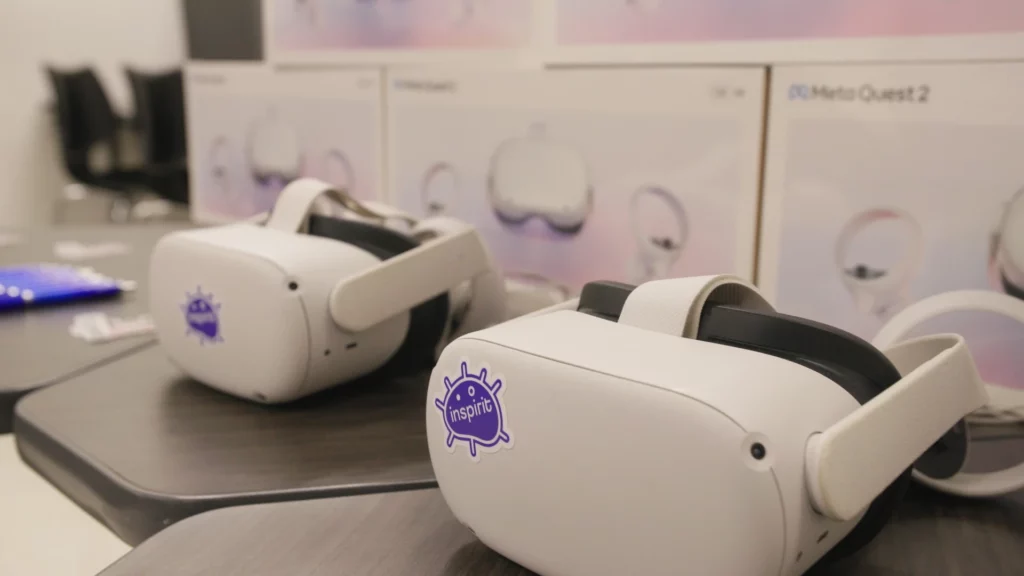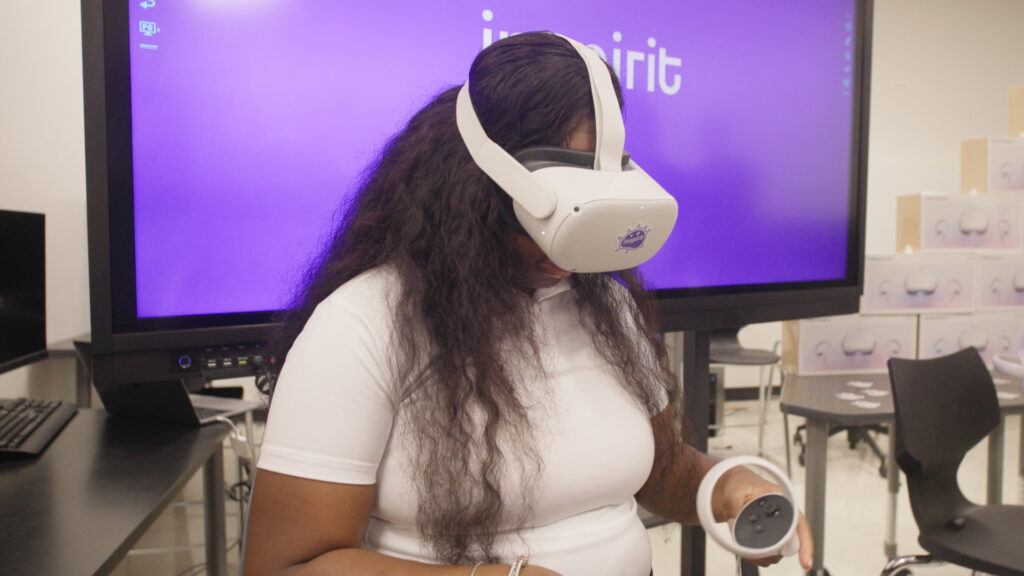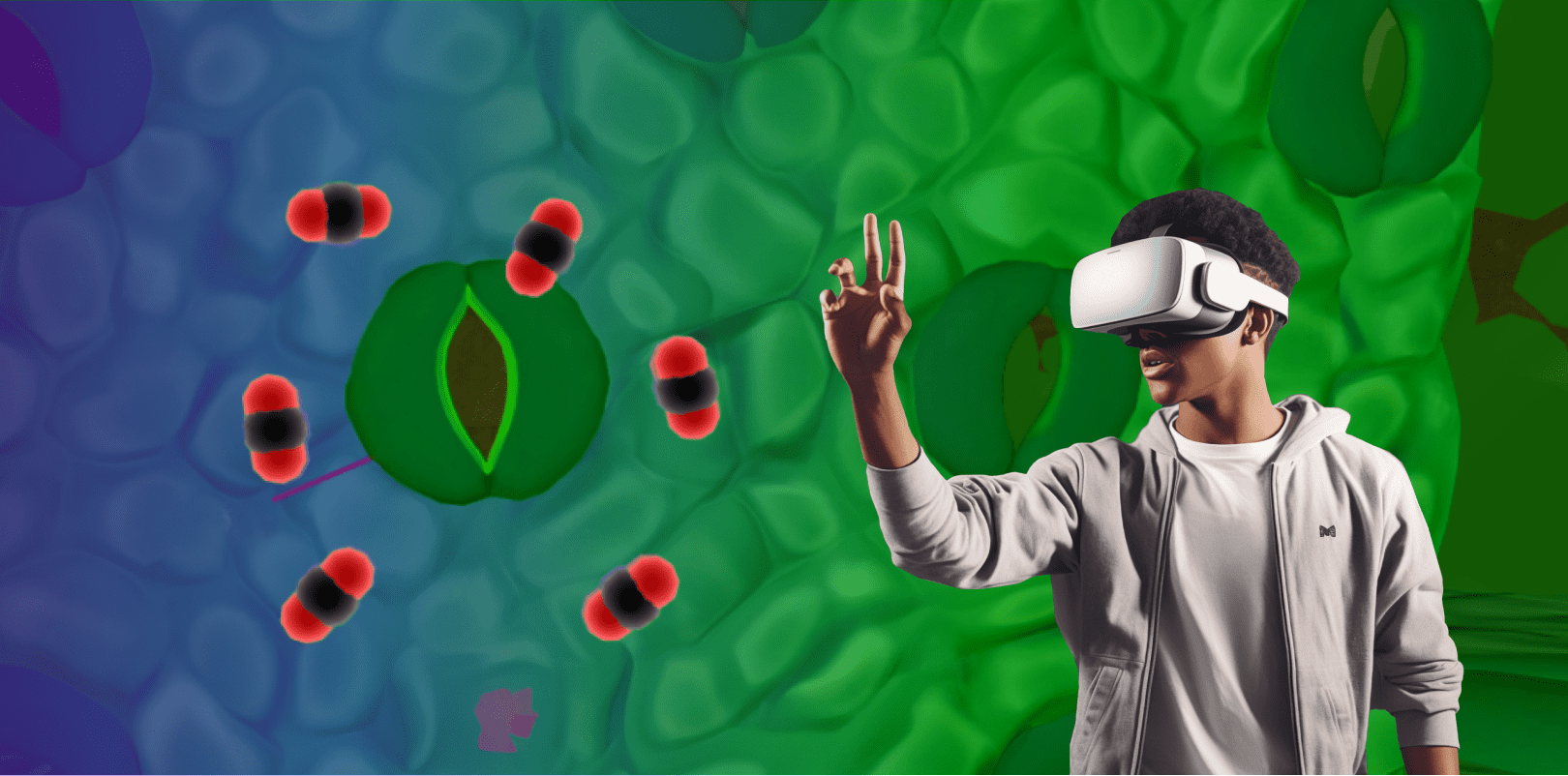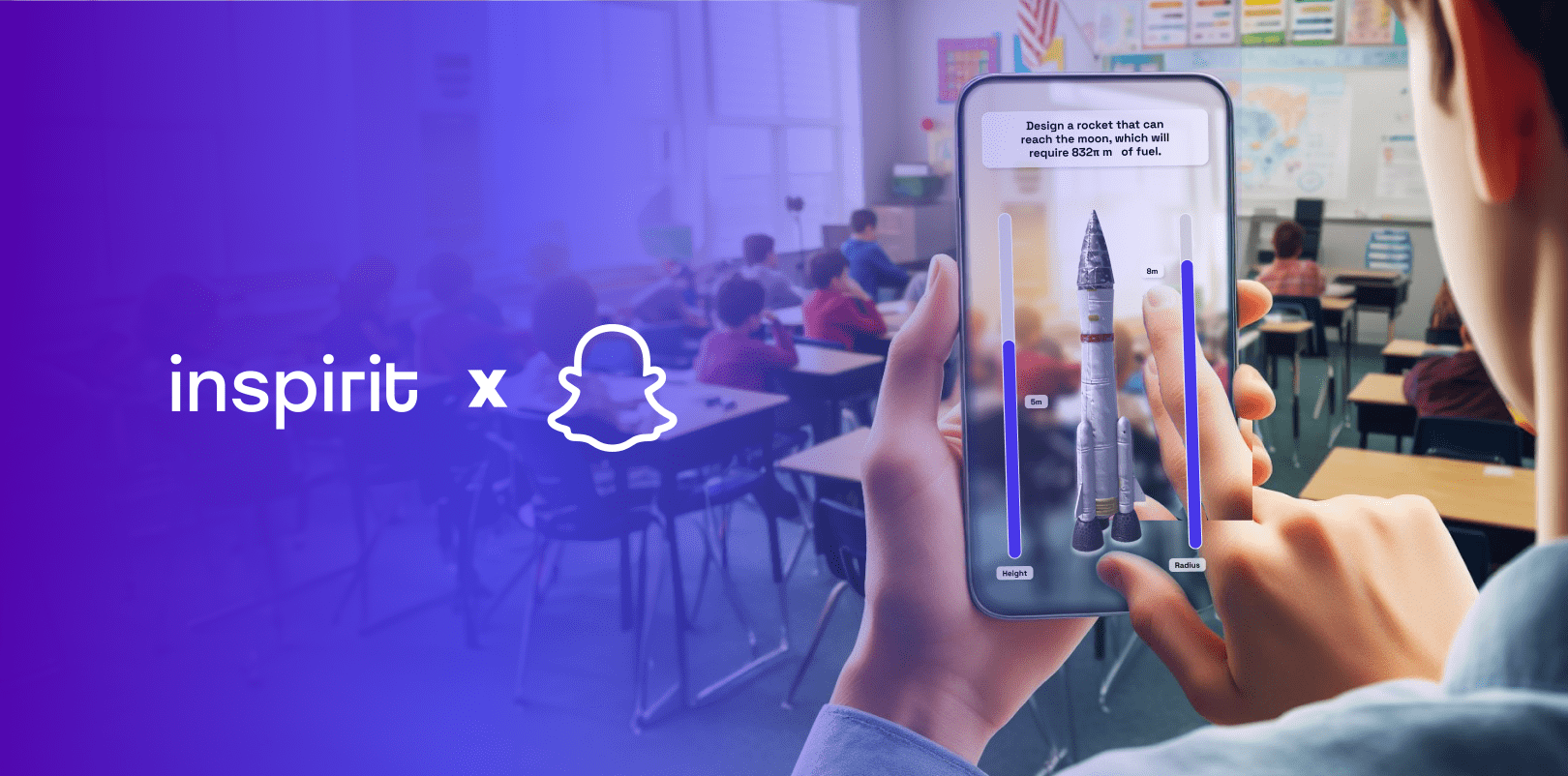Research & Case Studies
Explore the transformative power of immersive learning and delve into compelling evidence from our case studies and research projects, as well as external findings by experts in the field.
The Evidence of the Transformative Power of
Our Immersive Learning Solutions
Inspired by our advisor Dr. Jeremy Bailenson, founder of the Stanford Virtual Human Interaction Lab, we develop innovative content that aligns with the DICE framework, emphasizing learning experiences that are Dangerous, Impossible, Counterproductive, or Expensive in the real world.


Our interactive STEM labs, career discovery content, and skill training modules offer students the opportunity to undertake experiential learning (Kolb, 1984), “learn by doing”, through immersive simulations and 3D models, fostering a deep understanding of complex concepts and practical skills without ever leaving the classroom.
Our In-house Case Studies and Research Projects
Inspirit remains at the forefront of educational innovation through ongoing research collaborations with both academic and
school partners. Our dedicated research team works hand in hand with distinguished academics from world-renowned universities, including Harvard, Stanford, Northeastern, Michigan State, and the University of Toronto. Together, we delve into the transformative potential of XR technologies in education.
-
Transforming Physics Education at CodeRVA Regional High School
Discover how our partner school, CodeRVA, has transformed its physics classroom learning by utilizing Inspirit’s immersive VR simulation, Projectile Motion: shooting cannon. This simulation has been instrumental in…
-
Inspiring Future Scientists at Kell High School
Explore how Kell High School leveraged Inspirit’s interactive VR simulations, such as DNA replication and photosynthesis, to move students from passive learners to active explorers of the microscopic…
-
How Stride, Inc. Uses Inspirit’s AR Curriculum to Boost Student Confidence and Engagement Levels
With support from researchers at Stanford University, Inspirit also completed a case study partnering with Snap and Stride to validate AR use in the classroom. Inspirit led the…
For more information on our previous and current research projects, reach out to our customer success team.
External Literature
Delve deeper into understanding Inspirit’s Experiential Learning
Further Readings
● Bailenson, J. N. (2018). Experience on Demand. W. W. Norton & Company
● Bandura, A. (1995). Self-efficacy in changing societies. Cambridge University Press.
● Barsalou, L. W. (2008). Grounded cognition. Annual Review of Psychology, 59, 617–645. https://doi.org/10.1146/annurev.psych.59.103006.093639
● Clark, A. (1999). An embodied cognitive science? Trends in Cognitive Sciences, 3(9), 345–351. https://doi.org/10.1016/S1364-6613(99)01361-3
● David, N., Newen, A., & Vogeley, K. (2008). The “Sense of Agency” and its underlying cognitive and neural mechanisms. Consciousness and Cognition, 17(2), 523–534. https://doi.org/10.1016/j.concog.2008.03.004
● Glenberg, A. M. (2010). Embodiment as a unifying perspective for psychology. WIREs Cognitive Science, 1(4), 586–596. https://doi.org/10.1002/wcs.55
● Goldin-Meadow, S. (2003). Hearing gesture: How our hands help us think. Harvard University Press.
● Goldin-Meadow, S., Cook, S. W., & Mitchell, Z. A. (2009). Gesturing gives children new ideas about math. Psychological Science, 20(3), 267–272. https://doi.org/10.1111/j.1467-9280.2009.02297.x
● Hou, X., Zhang, J., Budagavi, M., & Dey, S. (2019). Head and body motion prediction to enable mobile VR experiences with low latency. 2019 IEEE Global Communications Conference (GLOBECOM), 1-7. https://doi.org/10.1109/GLOBECOM38437.2019.9014097
● Hostetter, A. B., & Alibali, M. W. (2008). Visible embodiment: Gestures as simulated action. Psychonomic Bulletin & Review, 15(3), 495–514. https://doi.org/10.3758/PBR.15.3.495
● Kilteni, K., Groten, R., & Slater, M. (2012). The sense of embodiment in virtual reality. Presence: Teleoperators and Virtual Environments, 21(4), 373–387.https://doi.org/10.1162/PRES_a_00124
● Kolb, D. A. (1984). Experiential learning: Experience as the source of learning and development. Prentice‐Hall.
● Makransky, G., Terkildsen, T. S., & Mayer, R. E. (2017). Adding immersive virtual reality to a science lab simulation causes more presence but less learning. Learning and Instruction. https://doi.org/10.1016/j.learninstruc.2017.12.007
● Markowitz, D. M., Laha, R., Perone, B. P., Pea, R. D., & Bailenson, J. N. (2018). Immersive virtual reality field trips facilitate learning about climate change. Frontiers in Psychology, 9, 2364. https://doi.org/10.3389/fpsyg.2018.02364
● Niedenthal, P. M., Barsalou, L. W., Winkielman, P., Krauth-Gruber, S., & Ric, F. (2005). Embodiment in attitudes, social perception, and emotion. Personality and Social Psychology Review, 9(3), 184–211. https://doi.org/10.1207/s15327957pspr0903_1
● Queiroz, A. C. M., Fauville, G., Herrera, F., da Leme, M. I. S., & Bailenson, J. N. (2022). Do students learn better with immersive virtual reality videos than conventional videos? A comparison of media effects with middle school girls. Technology, Mind, and Behavior, 3(2). https://doi.org/10.1037/tmb0000052
● Roselli, C., Ciardo, F., De Tommaso, D., & Wykowska, A. (2022). Human-likeness and attribution of intentionality predict vicarious sense of agency over humanoid robot actions.Stern, E. (2015). Embodied cognition: A grasp on human thinking. Nature, 524(7565), 158–159. https://doi.org/10.1038/524158a
● Wahlheim, C. N., Eisenberg, M. L., Stawarczyk, D., & Zacks, J. M. (2022). Understanding everyday events: Predictive-looking errors drive memory updating. Psychological Science, 33(6), 765–781. https://doi.org/10.1177/09567976211056870
● Yohji, J. (2022, August 1). Assessing the impact of VR (Virtual Reality) headsets on under 13-year-olds. Retrieved from https://www.visionfountain.com/2022/08/01/assessing-the-impact-of-vr-virtual-reality-headsets-on-under-13-year-olds/



